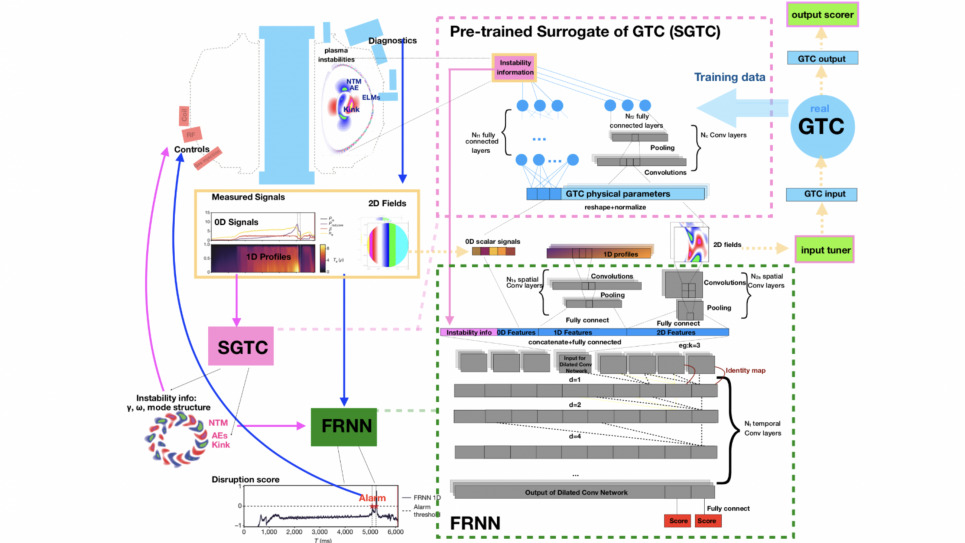
Overview of the plasma disruption prediction and control workflow for SGTC in FRNN
The research goals of this project is to develop realistic predictive plasma models of disruptions that are integrated within a modern plasma control system. This novel integrated modeling tool would ideally lead to a mature AI-enabled comprehensive control system for ITER and future reactors that feature integration with full pilot-plant system models.
An especially time-urgent and formidable problem facing the development of a fusion energy reactor is the need to reliably predict and avoid largescale major disruptions -- powerful instabilities that result in a loss of plasma confinement accompanied by rapid release of energy which if unmitigated can significantly damage the plasma facing components and harm the structural integrity of the whole device. Prediction and mitigation are key to major “tokamak systems” such as the EUROFUSION Joint European Torus (JET) experiment today and will be crucial for the ground breaking $25B international burning plasma ITER device targeted for “first plasma” in 2026 -- and the exciting potential to exceed “breakeven” fusion power by a factor of 10 during the D-T (Deuterium-Tritium) experimental phase starting in 2036.
With engagement of the DOE leadership class high-performance computing (HPC) facilities managed by the Advanced Scientific Computing Research (ASCR) program, the practical impact of these studies is to deliver state-of-the-art AI-driven projections required to help cost-effectively plan, “steer,” & harvest the needed information from ITER to establish the foundations for a viable demonstration of a practical operating fusion reactor. The proposed simulations will support the physics studies identified by the project “Machine Learning Application to Predictive Studies of Disruptions in Tokamaks” funded by the Fusion Energy Science (FES) program and the SciDAC (Scientific Discovery through Advanced Computing) project “Integrated Simulation of Energetic Particle in Burning Plasmas” jointly funded by FES and ASCR. In addition to the clear mission importance to the Fusion program, the critical reliance of HPC and AI/machine learning to the success of this project establishes a vital connection to the ASCR program and the DOE leadership computing facilities.